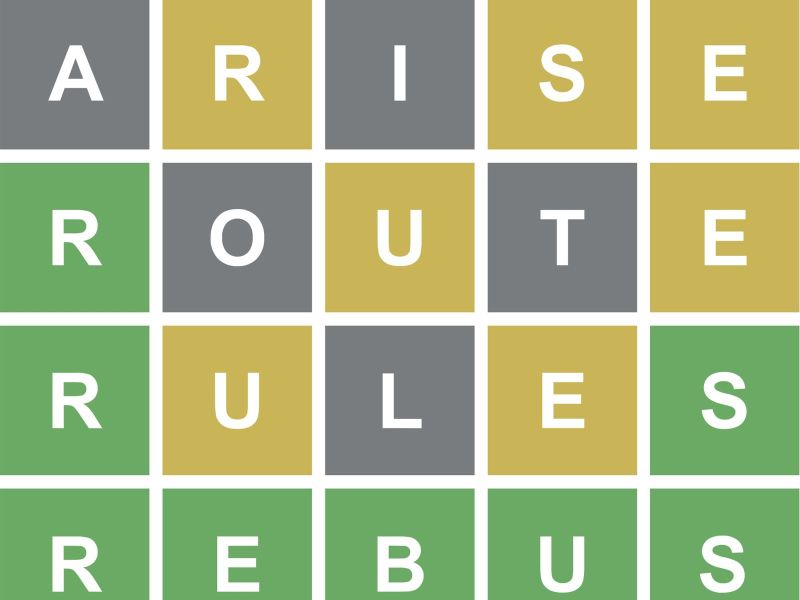If you’ve spent any time on the internet in the past six weeks, you’re likely familiar with the daily Wordle craze — a regular ambush of green, yellow and gray square icons picking up speed globally.
A word puzzle recently acquired by The New York Times, Wordle presents users with six chances to guess a five-letter word every 24 hours. Players can share their results with others via a six-by-six emoji grid, in which the following color scheme applies — green indicates the correct letter in the correct spot, yellow indicates the correct letter in the incorrect spot and gray indicates that the letter is not contained in the final word at all.
To its myriad fans, Wordle’s appeal is encapsulated through a simple experience of joy and rapid sense of accomplishment. But the game also presents a complex linguistic challenge: how can you consistently maximize your chances of arriving at the correct word through a meticulously derived first guess? For some linguists, this is an answerable question.
Kyle Mahowald, a former postdoctoral scholar in the Stanford Natural Processing group and current assistant professor of linguistics at the University of Texas at Austin, explained in an email to The Daily that, “no matter what color the squares turn,” the best Wordle guesses allow players “to eliminate a lot of wrong answers.”
Mahowald emphasized the benefit of “negative evidence,” or gray squares. Eliminating letter possibilities can provide just as much useful information as guessing correct letters, he wrote. The program he devised tends to use words like “raise” as a common first guess in order to maximize information. Mahowald also added that not using any or all green letters in the second guess may allow for a faster solution than attempting to use all correct letters immediately.
Richard Futrell B.S ’10 M.A. ’12, assistant professor in language science at UC Irvine, devised another program that accomplishes a similar goal. His algorithm attempts to find an optimal first guess word, in which the resulting “set of compatible targets is as small as possible.”
“The derivation is pretty complex, but it comes out through a really, really simple intuition, which I think is the cool part,” he said. His program’s optimal guess, for those willing to sacrifice randomness for optimization, can be viewed here.
Students across academic disciplines have devised their own optimal guesses and mental algorithms. Anna Fisher Lopez ’25, for example, maximizes vowel usage and letter placement by using “media” on her first try. She is especially drawn to the collaborative aspect of the game and the ability to “compete” with fellow users that post their square grid each day. “I’m not playing if I’m not gonna win,” Fisher Lopez said.
Despite the efficiency of these optimization programs, Mahowald and Futrell agree that the joy of Wordle lies in its randomness. Both researchers said that they rarely, if ever, use their program’s suggested first guesses when they play the game. As Futrell put it, “It’s more fun when you’re not hyper-optimizing.” Mahowald added that the unexpected letter combinations increase the appeal of the game. “It’s kind of like poetry in that sense.”
Whether users opt for randomness and strategy, perhaps the most enjoyable part of the game is found in its social nature. “A charming thing about Wordle is the social aspect: seeing everyone’s compact emoji representations of their game each day,” Mahowald said. “If everyone were playing the same optimal strategy using the same computer program, that certainly wouldn’t be very fun.”
